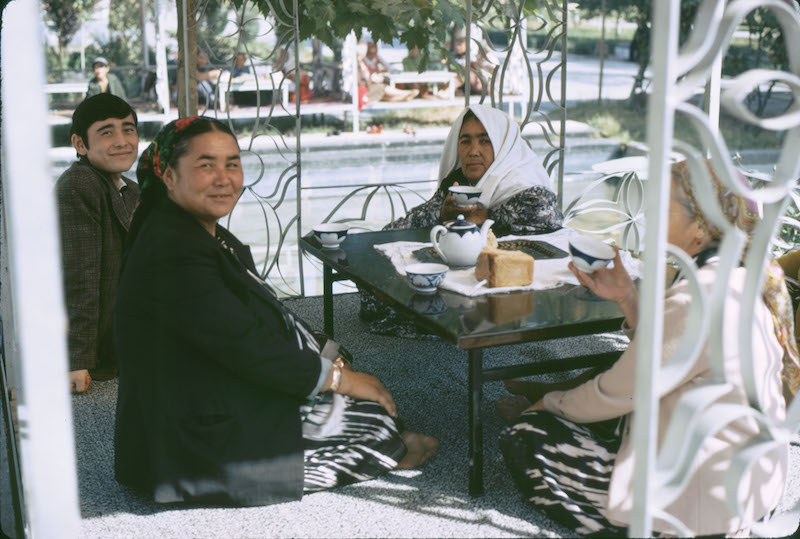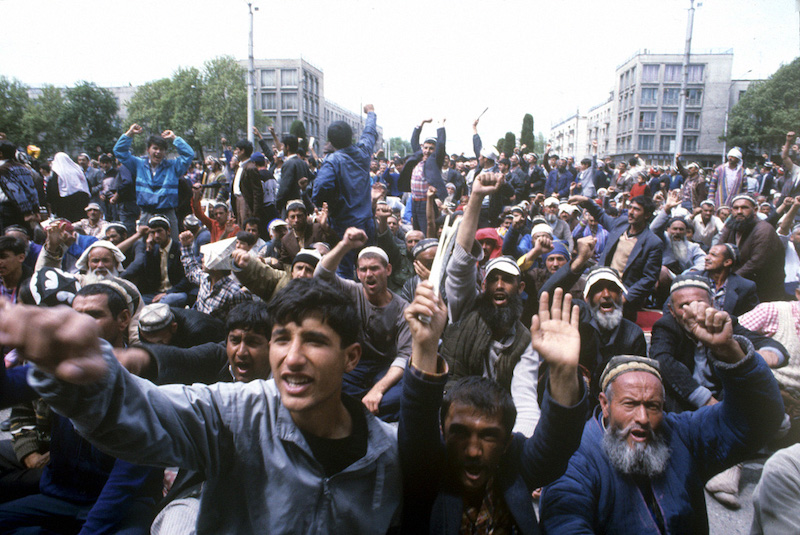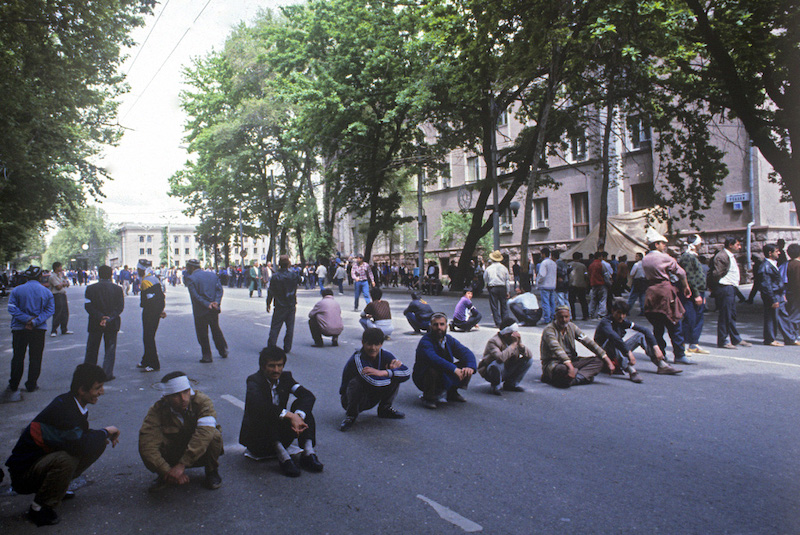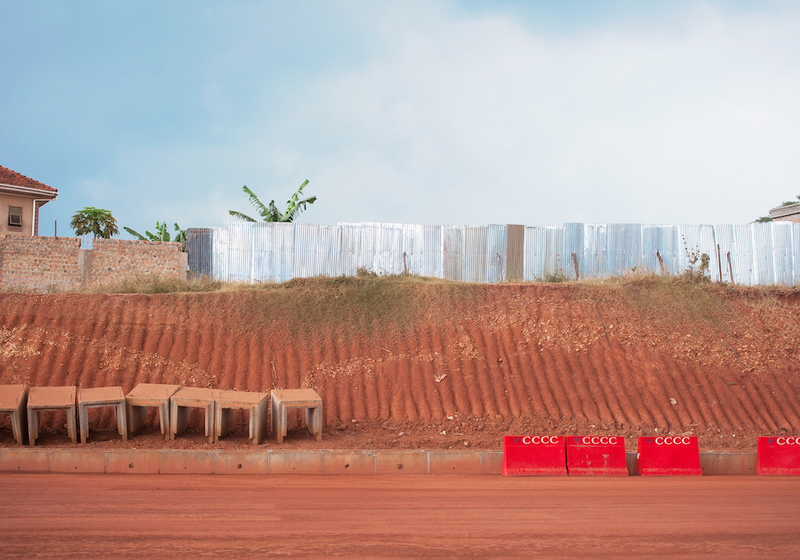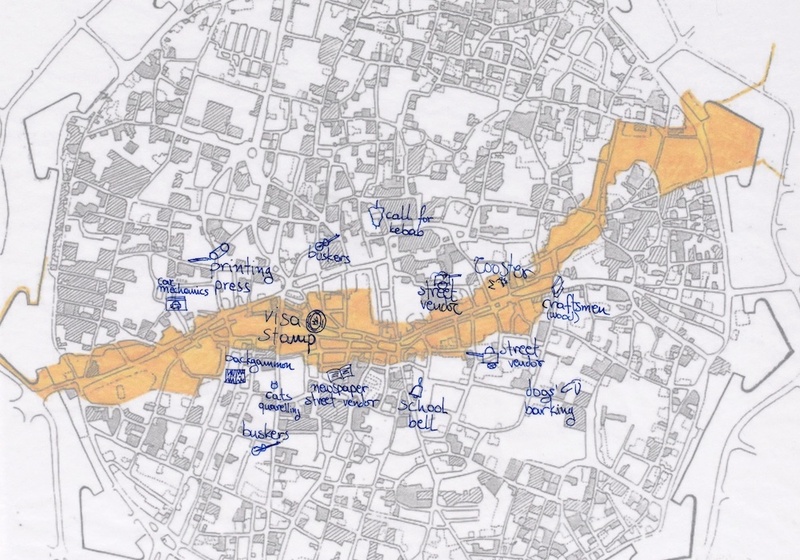
In his book Voices from the Soviet Edge, Canadian historian Jeff Sahadeo refers to the highly relevant but little-studied context: migration from the southern regions of the USSR to Moscow and Leningrad in the late Soviet era. Professor Sergei Abashin, one of the major Russian specialists in Central Asia, talk to Elizaveta Fokina about the key points of this work that reveals the Soviet idea of “friendship of the peoples” in a new way based on the stories of the migrants themselves.
Voices from the Soviet Edge: Southern Migrants in Leningrad and Moscow was written by Canadian historian Jeff Sahadeo, an expert in the history of the Russian Empire and the USSR, and published in 2019. His previous book was called Russian Colonial Society in Tashkent (1865–1923) and presented an analysis of the structure of colonial society in Turkestan during the period when the region was a part of the Russian Empire. In Voices from the Soviet Edge, Sahadeo tries to comprehend the situation of the next historical period—the Soviet one—focusing on the later years of the SovietUnion. The occurring shift of time, as well as the change in the author's research focus, are interesting for understanding the difference between the Russian Empire and the USSR. Is there continuity between them? Some believe it was one and the same state: the Russian Empire is associated with colonialism, respectively, and the Soviet Union is perceived as a colonial imperial formation. Others think that the Russian Empire—as something that embodies “the historical Russia”—was a special civilization, thus the USSR inherited this specialness. It is not so much continuity that Jeff Sahadeo proposes to trace as the gap between the two eras and states, paying attention to their significant differences.
The general context of the new monograph, as I have said, is related to an interest in the late Soviet era. In the past, foreign and Russian historians were usually focused on the problems of Stalinism and they often underestimated the importance of the late Soviet period. Over the past ten to fifteen years, more and more works on the late history of the USSR are appearing with an increasing number of discussions in academic circles about its nature. Much has been said about Stalinism thus its context is clear: mobilization modernization, repressions, famine, and war. In the late Soviet years, there were no longer mass repressions and transformations took on a different character, becoming more socially oriented. In a sense, a consumer society was created: Soviet citizens got cars, apartments, and plots of land. Another aspect of the researchers’ interest in Soviet and late Soviet society is associated with the shift of attention from Moscow, Leningrad, and Russia to other regions of the USSR. What happened on the outskirts? The same South Caucasus and Central Asia that were previously excluded from the general picture, as if they never actually existed? What kind of socialism was there in Central Asia? Or in Azerbaijan or Georgia? Although in his book Sahadeo writes about Moscow and Leningrad, he changes the perspective and looks at these megacities through the eyes of migrants from the suburbs.
Sahadeo develops this idea and insists that the late Soviet era was very dynamic. It was not a time of stagnation, but of important shifts and changes in the Soviet outskirts.
The monograph contains several general theses. The first disputes a widely spread belief that the population of the Soviet Union and especially Central Asia was restricted in its mobility with everyone tied to their territories through registration, being controlled by the state and having to obey it. Recently, works have appeared in which authors point to the colossally mobile character of the USSR. For example, in Broad is My Native Land, Lewis H. Siegelbaum and Leslie Page Moch state that Soviet citizens actively moved from rural areas to cities, from one region to another, from the center to the outskirts and from the outskirts to the center, thus revealing completely different types of mobility. Jeff Sahadeo's book develops this idea with a focus on the South Caucasus and Central Asia in the late Soviet era—a period of immense territorial and social mobility.
The second important thesis refutes the perception of the late Soviet era as a period often characterized by economic stagnation and the population’s lack of hope for the future. Recently authors that have been grounding their theses, among other things, in materials from Central Asia and the South Caucasus, have questioned this concept. For example, as Artemy Kalinovsky shows in his book Laboratory of Socialist Development: Cold War Politics and Decolonization in Soviet Tajikistan, that large scale projects aimed at the development of the region were unfolding in Central Asia at that time: many people received education, new work positions, as well as opportunities for social and territorial mobility, which allowed them to make plans for the future. Sahadeo develops this idea and insists that the late Soviet era was very dynamic. It was not a time of stagnation, but of important shifts and changes in the Soviet outskirts.
Urbain J. Kinet / Geography Department at Berkeley
Previously, researchers often looked at the USSR and relations within Russia, at Moscow and its regions by analogy with colonial societies characterized by the metropolis and subordinate colonies, ethnic segregation, exploitation, and so on. Sahadeo suggests looking at the situation from a different perspective: in Soviet times, a special model for integrating the outskirts into Soviet society was proposed and it can hardly be described as colonial. In Moscow and Leningrad, there was no legal and social segregation in relation to migrants: everyone was equal in terms of their status. There were neither stigmatizing, official ideologies about migration, nor forms of official racism. The Canadian author states that, “The Soviet Union was a unique human and state experiment.” Not only does he consider the USSR as a state different from the Russian Empire, but he also insists that it was a unique social experiment and a type of society, completely different from Britain or France in regard to their attitude towards migrants from their former colonies.
Another question is to what extent he manages to prove this thesis. In his monograph, Sahadeo uses an interesting methodology that I would like to draw particular attention to. The author did not want to look at migrants’ lives through the eyes of officials and representatives of the Russian population and build his conclusions on this. His intention was to return to the voices of the people of Central Asia as full-fledged subjects of the Soviet era with their own expectations, plans, and actions. The main method the author applies is not connected with the study of the archives in Moscow and St. Petersburg , but with the research of migrant oral histories. In the 2000s, Sahadeo and his colleagues conducted a large number of interviews, talking to people from the now independent countries of the South Caucasus and Central Asia, as well as from some regions of today's Russia. Their respondents were people who migrated to Moscow or Leningrad in the 1970s and 1980s. This methodology has an undeniable advantage of allowing their interlocutors to add living stories to official documents. But it could also be problematic: when, twenty to thirty years later, people assess their past, they already have a completely different experience of the present that can lead to distortions. In the 2000s, for example, they already faced open migrant-phobia in Russian megacities, against the background of which the previous problems could now look insignificant. In his monograph, the researcher approaches this source with a due caution and reservations.
The Soviet idea of “friendship of peoples” was the very mechanism that prevented public discrimination and allowed people to resist its various forms
One of the less fundamental, but also interesting theses of Sahadeo’s is his affirmation of the Soviet experience as unique and at the same time related to the world’s postcolonial tendencies of the time. The writer compares migration from the South Caucasus and Central Asia to Leningrad and Moscow with similar processes occurring in France and Britain. In modern times, according to Sahadeo, megacities are developing by drawing the population from the former colonies, which have now become independent states. At the same time, new forms of neo-colonialism and discrimination are emerging: through the introduction of special instruments of control, migrants are made illegal or presented as illegal, thereby reproducing racist and xenophobic attitudes towards them. The researcher compares the situation in the USSR with that of other European countries. He addresses the following questions traditionally associated with migrant research: Why did people move? How did they make decisions? How did they adapt? Where did they live? What did they eat? Who did they communicate with? How did they build diaspora relations? How did they establish relations with the locals? The book contains a good deal of living historical and anthropological material about various aspects of migrant life in Moscow and Leningrad. At the same time, the author analyzes the particular Soviet idea of “friendship of peoples”, which was the very mechanism that prevented public discrimination and allowed people to resist its various forms.
When Sahadeo speaks about the specificity of the Soviet experience, he describes the ideology of “friendship of peoples” as one of the aspects of this uniqueness—although I would rather simply call it a feature. Why not uniqueness? In one of the chapters, he writes about racism and states that forms of discrimination, xenophobic attitudes, and insults also existed in the USSR. Another chapter of the book dwells on the informal economy and the way different groups of people who moved to Moscow and Leningrad experienced racism. Some migrants entered universities and held official positions, thus integrating into the local society much quicker and fitting into the ideology of “friendship of peoples.” But there were other categories of migrants who participated in the informal economy, coming to bigger cities to trade and work on construction sites. Their number has been growing steadily since the late 1970s. In their stories, these people often emphasized their exclusion. They had an illegal status and did not have documents or registration and had to engage in informal economic activities, which in turn led to persecution by the state. Their relations with the police and the local population were also difficult: students could perceive their fellow students-migrants as belonging to the same community, whereas market sellers were looked at in a completely different way. And in this sense, their position did not differ very much from that of the newcomers in London or Paris, with whom Sahadeo compares Moscow and Leningrad.
I will add that talking about the uniqueness of the Soviet experiment is also difficult because we know how the situation developed further, already in the post-Soviet era, when migration from the former Soviet outskirts to Russia took on a completely new scale. The number of migrants from the South Caucasus and Central Asia in the 1970s-1980s was ten times lower, therefore its relative problem-freeness can be considered as a result of not only the specifics of the Soviet system, but also of the fact that migration itself from these regions was at the early stages of its formation. In this sense, the post-Soviet situation can still be viewed as still a continuation of Soviet tendencies and not at all as resulting from the collapse of the USSR.
RIA Novosti archive / Ratushenko, CC-BY-SA 3.0
Academically, Jeff Sahadeo's book is important because it meets current interest in the late Soviet era and the peripheries of the USSR. The book does not exhaust this topic, but its author takes an important step towards understanding the dynamics of the Soviet experience. What was it and how should you look at it? Was the Soviet Union moving in the same direction as all other countries, consistently going through the stages of modernization, consumer society, and industrialization? The discussion about the specificity of the USSR is now extremely topical. Some say that this was a unique alternative that did not materialize for various reasons, whereas others assume that the country's particularity in that historical period was due to an economy of mobilization, the effectiveness of which has its own limits.
The book is also important in the context of the study of modern migration from Central Asia to Russia. Sahadeo shows that these processes did not begin in the 2000s, but much earlier. He sees in it a fundamental social phenomenon that did not occur by chance. How important is Soviet identity and the memories of the Soviet past for modern migration? Migrants from Central Asia living in Russia are either people who were born during the Soviet era or their children who have some memories of it. They know Russian and have a special attitude towards Soviet images, institutions, and phenomena. An important aspect of studying modern migration is related to attempts to understand how exactly this former “Sovietness” and the idea of “friendship of peoples” has influenced it.
Translated from Russian by Olga Bubich

